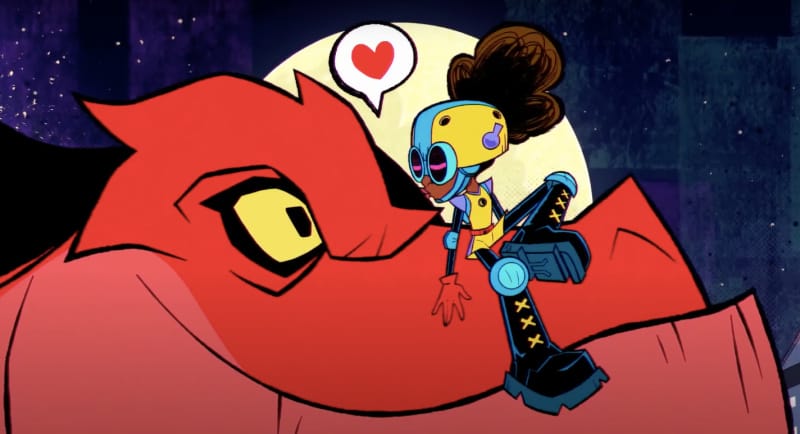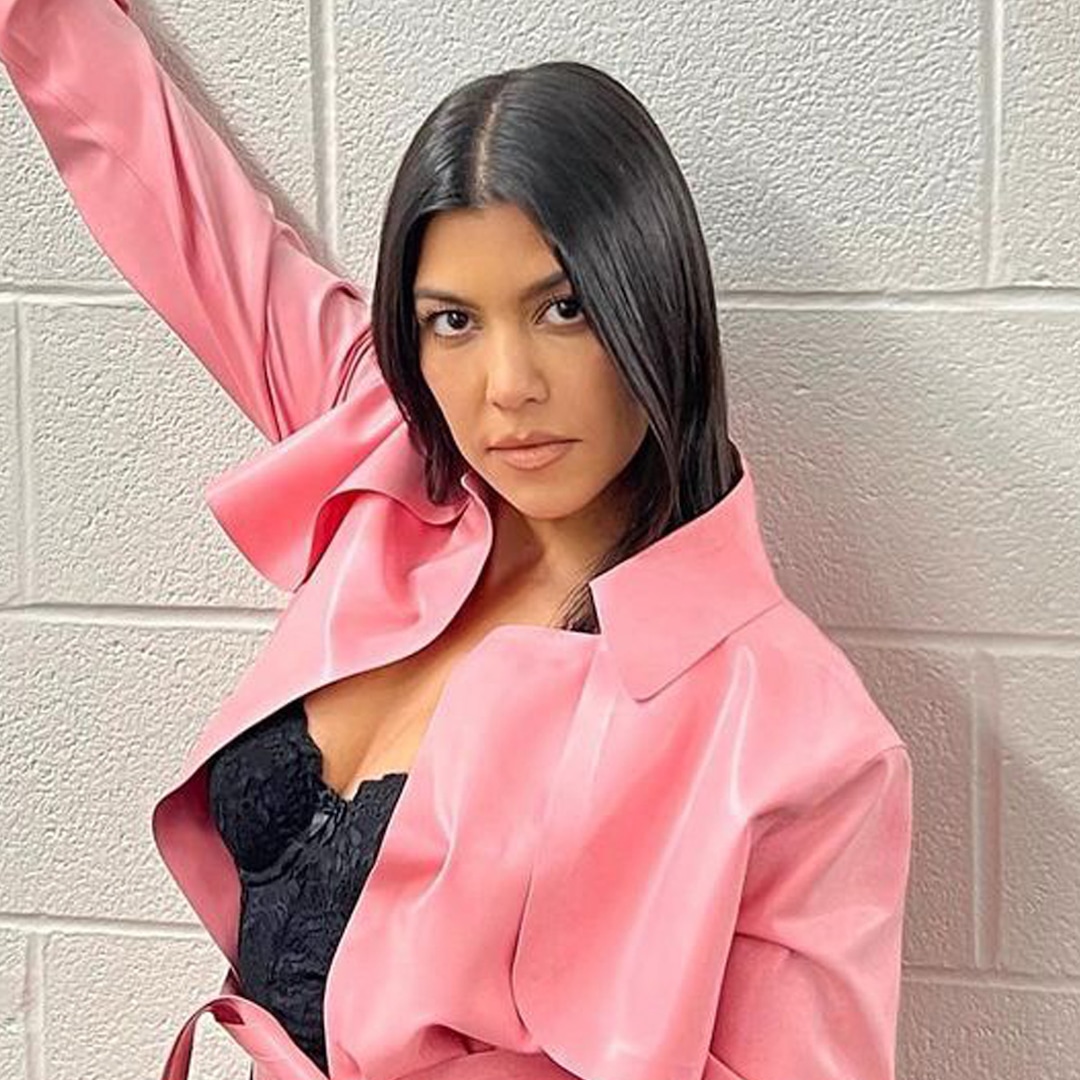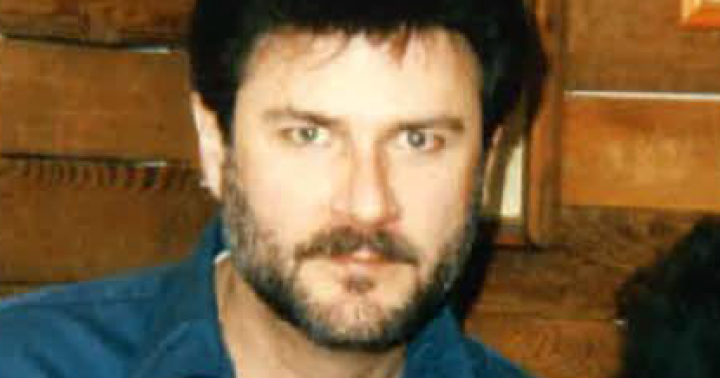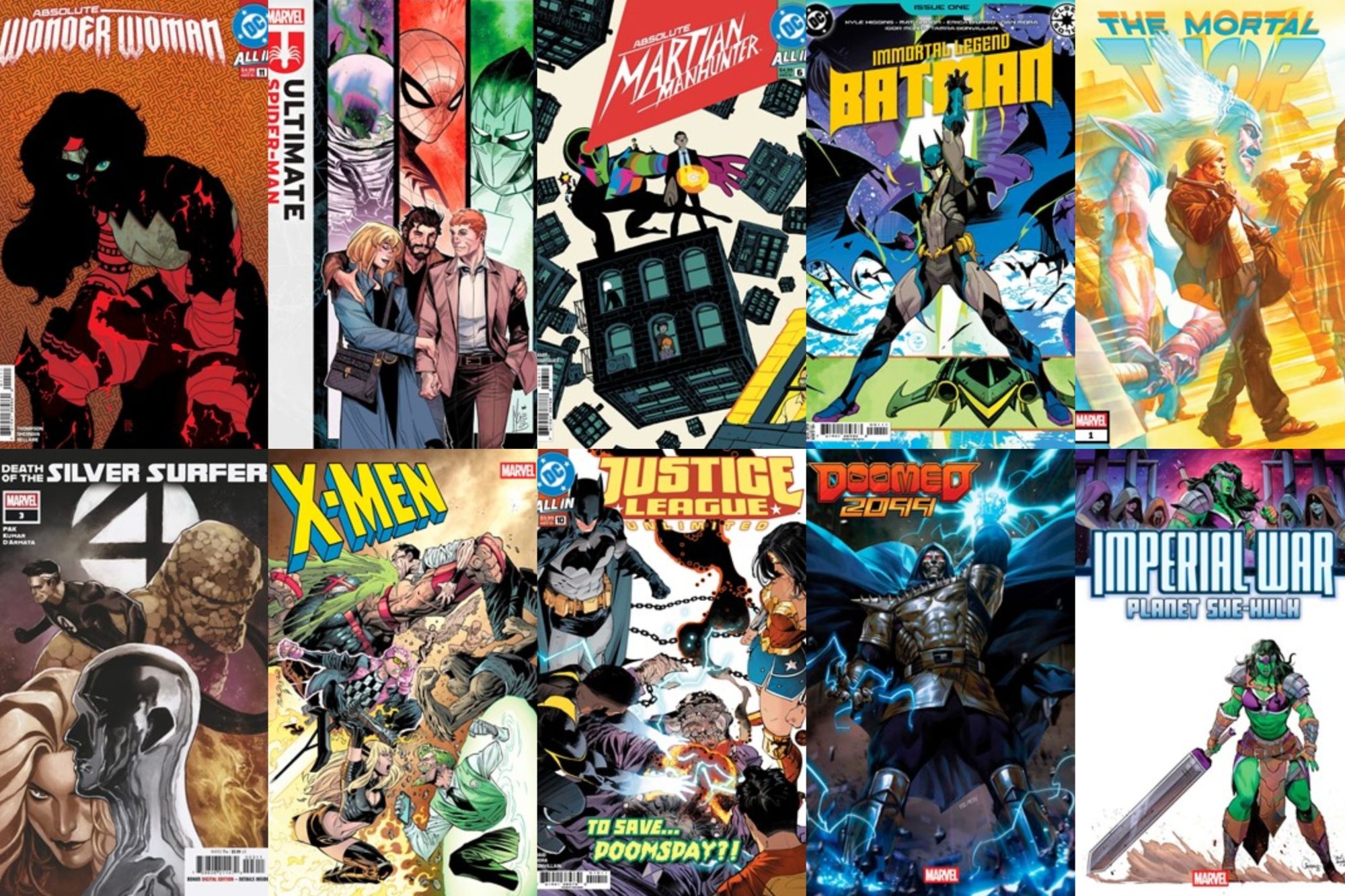The 1950s were a game-changing era for film. It was the emergence of technological breakthroughs and bold new storytelling, with the studios giving in to directors and stars who wished to be the best new creative visionaries. This was a time when Hollywood became afraid of the rising influence of television, and started embracing widescreen formats, color, and epic storytelling for the sake of staying on top.
More than just technological advancements, film became a reflection of the cultural mood. Rebels, Cold War paranoia, social conformity, class, fame, and wealth became prominent topics; international film movements influenced American storytelling, and vice versa; together, both those in Hollywood and worldwide made the 1950s a bridge between classical Hollywood and the more experimental auteur films. The best movie from every year of the 1950s reflects that as much as it can.
‘Sunset Boulevard’ (1950)
Sunset Boulevard is probably the most important movie of 1950; other great films that came out this year includes In a Lonely Place (Humphrey Bogart‘s best role), The Asphalt Jungle (John Huston‘s brilliant crime caper), and All About Eve (a great social satire and dark-ish comedy). Sunset Boulevard was sort of more important than these other films because it was one of the first movies of the time to skewer fame and Hollywood, criticizing the industry and its delusions of grandeur.
Billy Wilder‘s Sunset Boulevard follows struggling screenwriter Joe Gillis (William Holden), who meets the fading silent-film star, Norma Desmond (Gloria Swanson). Desmond clings to her past glory, living in a bubble of self-conviction and delusion; she has a devoted butler who fuels her beliefs, and Joe moves into her home under the guise of helping her make a new film. Sunset Boulevard is intense, but also a thrilling satire; the performances are haunting and amazing, which was recognized with the film getting nominated in all four acting categories. It’s a defining post-war classic.
‘Ace In the Hole’ (1951)
Another Wilder film, Ace In the Hole, was initially a failure, but was later reappraised and is currently deemed one of his most important films. The cold contemporary welcome was likely due to several factors—it was Wilder’s first stint as a writer, director, and producer, the first film he wrote without his longtime collaborator, Charles Brackett, and a story that was quite ahead of its time that it likely just went over people’s heads. Movies that marked 1951 were also The Day the Earth Stood Still, a sci-fi classic, and Streetcar Named Desire, a character drama that gave Marlon Brando a career boost.
Ace In the Hole follows disgraced, wild, and cynical journalist, Chuck Tatum (Kirk Douglas), who manipulates the story of a man trapped in a mine in New Mexico for personal gain. However, his coverage turns into a media circus, and the situation spirals out of control. Ace In the Hole is Wilder’s indictment of media exploitation and a sharp critique of sensationalism, and it’s just chillingly relevant to this day. This kind of theme was common on film in the 1950s, but Ace In the Hole is still one of cinema’s boldest tales of morals and decency.
‘Singin’ In the Rain’ (1952)
Singin’ In the Rain is often considered the greatest musical ever made. It’s joyful, it’s a spectacle, and has plenty of witty satire about filmmaking itself, depicted through beautiful cinematic magic and in bold and beautiful Technicolor. It was apparently François Truffaut‘s favorite movie, one he claimed to know by heart, and a less depressing depiction of Hollywood compared to Sunset Boulevard, for example. In 1952, film fans could also see John Ford‘s rom-com The Quiet Man and Katharine Hepburn‘s The African Queen, though Singin’ In the Rain is arguably more iconic.
Singin’ In the Rain is a lighthearted satirical musical about Hollywood’s transition from silent films to “talkies,” following actors who are trying to adapt to this new and bold filmmaking style. The stars are Gene Kelly, Debbie Reynolds, and Donald O’Connor, with Kelly starring as a silent film star, Don Lockwood, who tries to adapt to his studio’s new policies revolving “talkies.” Singin’ In the Rain is filled with romance, comedy, and dazzling song-and-dance numbers that are a staple of musical film today.
‘Tokyo Story’ (1953)
It’s hard to choose any other film than Tokyo Story, Yasujiro Ozu‘s cinema staple. Granted, this is more for movie buffs and anyone considering themselves one, since it’s a Japanese film and not widely seen like, say, Roman Holiday or The Big Heat (both from 1953). Still, Ozu’s meditation on generational divides and impermanence is so profoundly human and emotionally devastating, that it can’t be considered anything less than a masterpiece of film. In 2012, Sight and Sound gathered the opinions of film directors, who all agreed Tokyo Story was the greatest film of all time.
Tokyo Story is about an elderly couple who come from the countryside to visit their grown children in Tokyo. Their visit leads to them feeling neglected and forgotten as modern lifestyles consume their family members. The only person going out of her way to spend time with them is their presumed dead son’s wife, and the story feels relevant and hard-hitting even today, long after the post-war times. Modernization and fast-paced city life still consume everyone living in big cities, and it often separates us from our loved ones in inexplicable ways. Tokyo Story is a powerful drama that’s still very important in film.
‘Seven Samurai’ (1954)
Yes, Rear Window came out in 1954, and it’s iconic and influential, but we could argue Seven Samurai was a lot more influential, iconic, and impactful. Actually, that’s tough—deciding which of the two films was more impactful is a thankless task, but Seven Samurai, if anything, influenced the creation of Star Wars, deepened the impact on Westerns, and blended philosophy with action, emotion, and thrills. Akira Kurosawa‘s most famous historical epic revolutionized cinema, and it’s one of only several international films that had a massive impact on Hollywood that continues to this day.
Seven Samurai follows the residents of a village that’s continuously terrorized by looters and criminals. The village head decides to hire a ronin, Kambei (Takashi Shimura), who then gathers six other ronin to help him defend the villagers against the bandits. The movie shows them forging bonds of sacrifice, honor, and humanity; it has a romance amid the action, and a deep philosophy. Another interesting thing is that Seven Samurai is often considered the movie that pioneered the “assembling the team” sequence, which is popular in today’s heist and caper films.
‘The Night of the Hunter’ (1955)
The best movie directed by Charles Laughton is, undoubtedly, The Night of the Hunter. Obviously, it’s the only movie he’s directed, but if he ever tried anything else, it likely wouldn’t have been as haunting, revolutionary, and stark as The Night of the Hunter. This is another movie we can safely say was ahead of its time; it was received poorly at first, but nowadays, directors like Martin Scorsese, Spike Lee, and the Coen Brothers claim it had a huge impact on their filming and directing style. Laughton was a theatrical and film actor mostly, so his feverish fairy tale of good versus evil is a striking directorial effort.
The Night of the Hunter was based on the true story of Harry Powers and the book of the same name based on it. Powers is played by Robert Mitchum (eerily, I might add), where he poses as a preacher traveling through West Virginia to find a hidden stash of money. He finds the children of the man who hid away the money, and preys on them to get his hands on the cash. This nightmarish Southern Gothic fable is psychologically chilling and visually striking. It’s one of those movies you watch and then envy anyone about to see it for the first time.
‘The Searchers’ (1956)
John Ford‘s Western masterpiece, The Searchers, is one of the best Westerns of the 1950s. In 1956, film lovers had some great picks: The Ten Commandments, The Man Who Knew Too Much, and even Stanley Kubrick‘s The Killing; however, The Searchers is the best because it somewhat redefined the Western genre, with numerous publications naming it the best American Western movie, and overall, the best Western film of all time. It also solidified John Wayne as a major Western star, as his character in The Searchers is a complex anti-hero, influencing generations of filmmakers and performers afterward.
The Searchers is about a Civil War veteran, Ethan Edwards (Wayne), whose family gets killed and two nieces kidnapped. Edwards joins forces with other men who’ve been harmed by the same ploy, and they head out to search for those that wronged them. Fueled with hatred, vengeance, and obsession, Edwards flows from good to evil in small but meaningful moments across the film, becoming a morally gray character with plenty of valid motivation and blind rage. It’s an interesting and powerful Western with hints of psychological drama.
’12 Angry Men’ (1957)
12 Angry Men is probably the highest-rated movie from the 1950s on IMDb, with a solid 9/10 rating given by approximately one million users. Sidney Lumet directed the film, and his specialty was always character and dialogue-driven stories that tend to take place in one room. 12 Angry Men is a chamber drama—taking place in a single location, like, say, The Hateful Eight—and despite that, it’s a triumph of tension, intensity, and thrills. Embodying the ideals and flaws of democratic practices, 12 Angry Men boasts razor-sharp writing and incredible cast performances.
12 Angry Men follows twelve jurors deliberating a murder trial. One man’s dissent sparks a gripping debate on justice and doubt, and they go back and forth with their opinions and discourse on the murder. In American courts, every single juror must agree on the same verdict, since majority votes aren’t accepted. 12 Angry Men is timeless and highly influential, which is interesting, as it was Lumet’s directorial debut. It stars Henry Fonda, Martin Balsam, and Lee J. Cobb, among nine other powerhouse actors of the time.
‘Vertigo’ (1958)
Alfred Hitchcock made a bunch of films during his directorial career, but Vertigo is a hypnotic masterpiece that’s often considered his best work, or, his magnum opus. It’s a powerful thriller that explores obsession and illusion, paired with daring visuals and colors. Vertigo is often deemed the greatest film of the 1950s, and often the best movie ever made. Like many masterpieces on this list, Vertigo was also welcomed with a lukewarm reception upon release, but every movie that somehow moves boundaries and feels ahead of its time is frequently misunderstood by its peers. In some ways, this became a stamp of approval for numerous classics; thank god for reappraisals.
Vertigo follows a retired detective, Scottie Ferguson (James Stewart), who begins suffering from acrophobia (fear of heights) and vertigo after his colleague falls to his death from a rooftop. Scottie is hired to follow Madeleine (Kim Novak), the wife of his college acquaintance, but he becomes obsessed with her. This case and his familiarity with Madeleine leads to a spiraling mystery and psychological torment, with running themes of obsession, aggression, control, and fascination.
‘Some Like It Hot’ (1959)
Another Wilder classic, Some Like It Hot, is truly one of a kind, a gender-bending romantic comedy that boasts endlessly witty dialogue, perfectly performed by a powerhouse trio—Tony Curtis, Jack Lemmon, and Marilyn Monroe. Some Like It Hot was a trailblazer for modern comedy, but few people know it was based on the French film Fanfare of Love. The movie was also thought to be the reason The Hays Code rules were loosened over time, as its influence and humor were critically and commercially successful; this marked an ending to rules that said a film should never “lower the moral standards of those who see it.”
Some Like It Hot is about two friends and musicians, Joe (Curtis) and Jerry (Lemmon), who disguise themselves as women in an all-ladies band while running away from mobsters. There, they become Josephine and Daphne, and meet the band’s singer, Sugar (Monroe). Joe and Jerry fall for Sugar but have to maintain their disguises in order to stay hidden; however, their ploys to win her heart often go to different extremes and get them into different entanglements. It’s comedy chaos and genius all at once, and came out the same year as North by Northwest, 400 Blows, and Anatomy of a Murder.

























